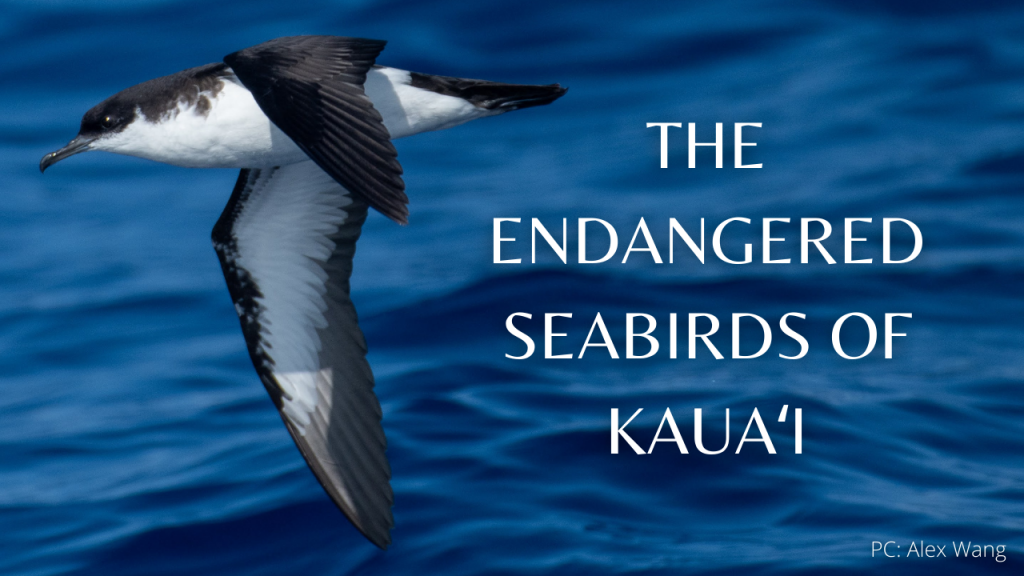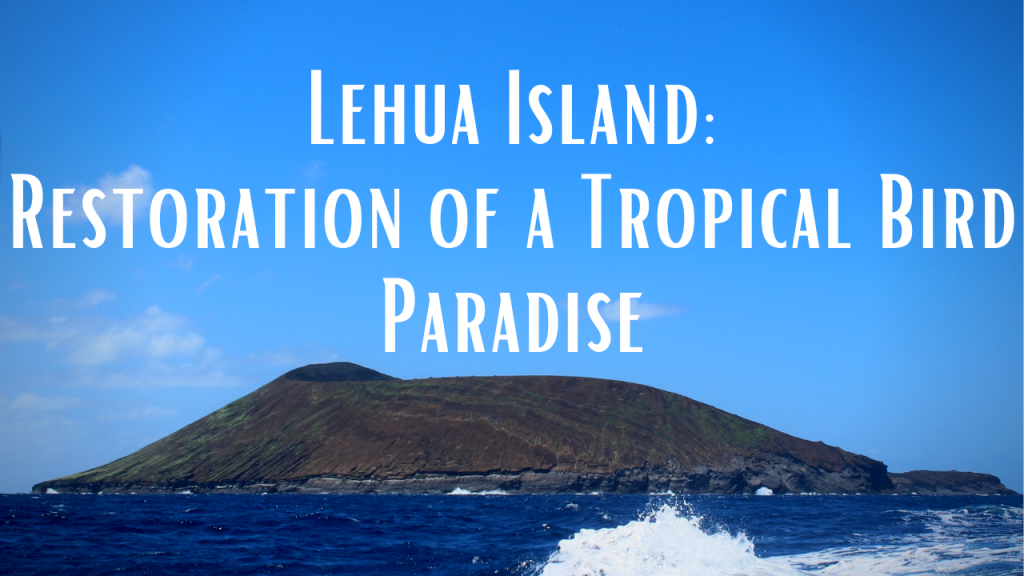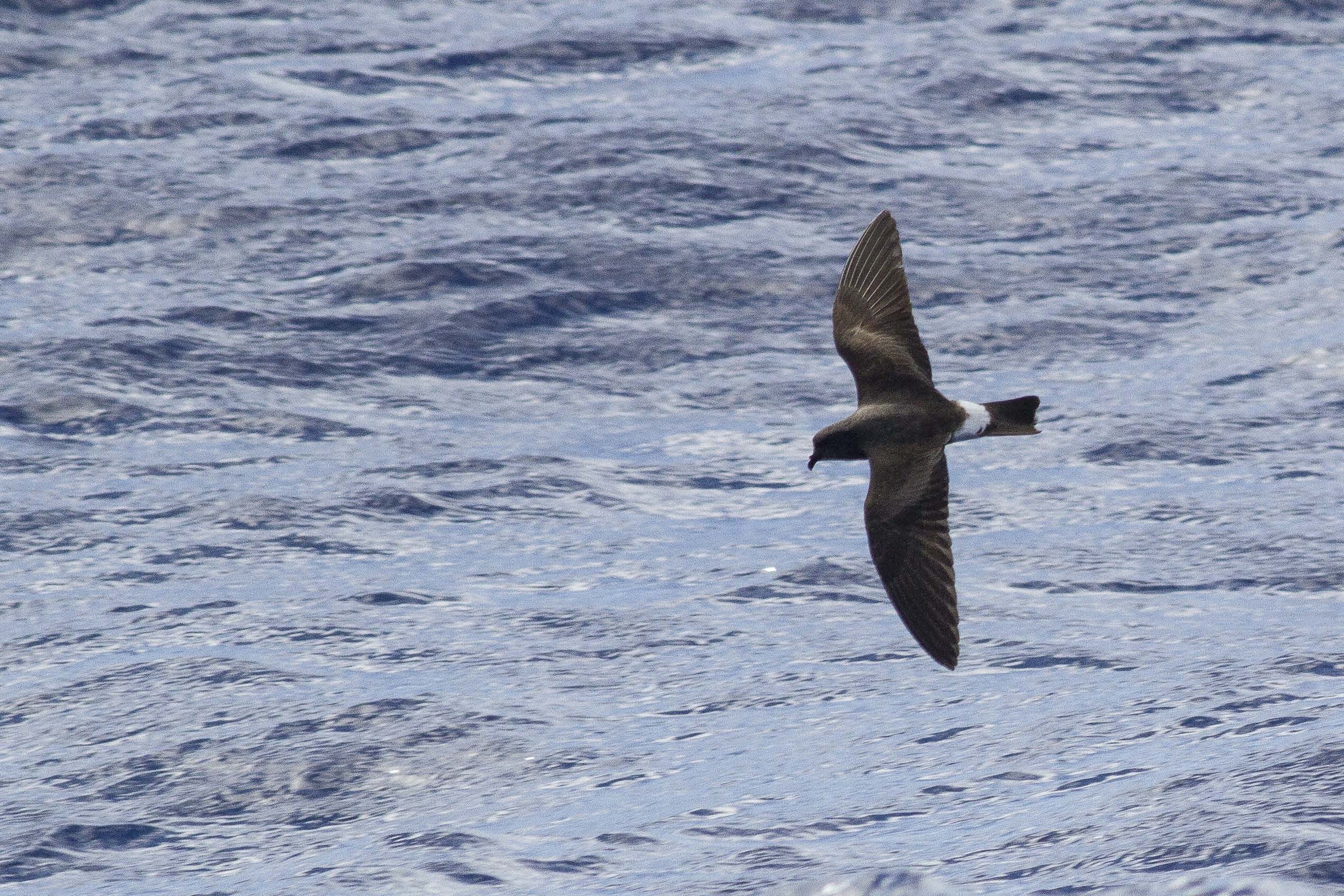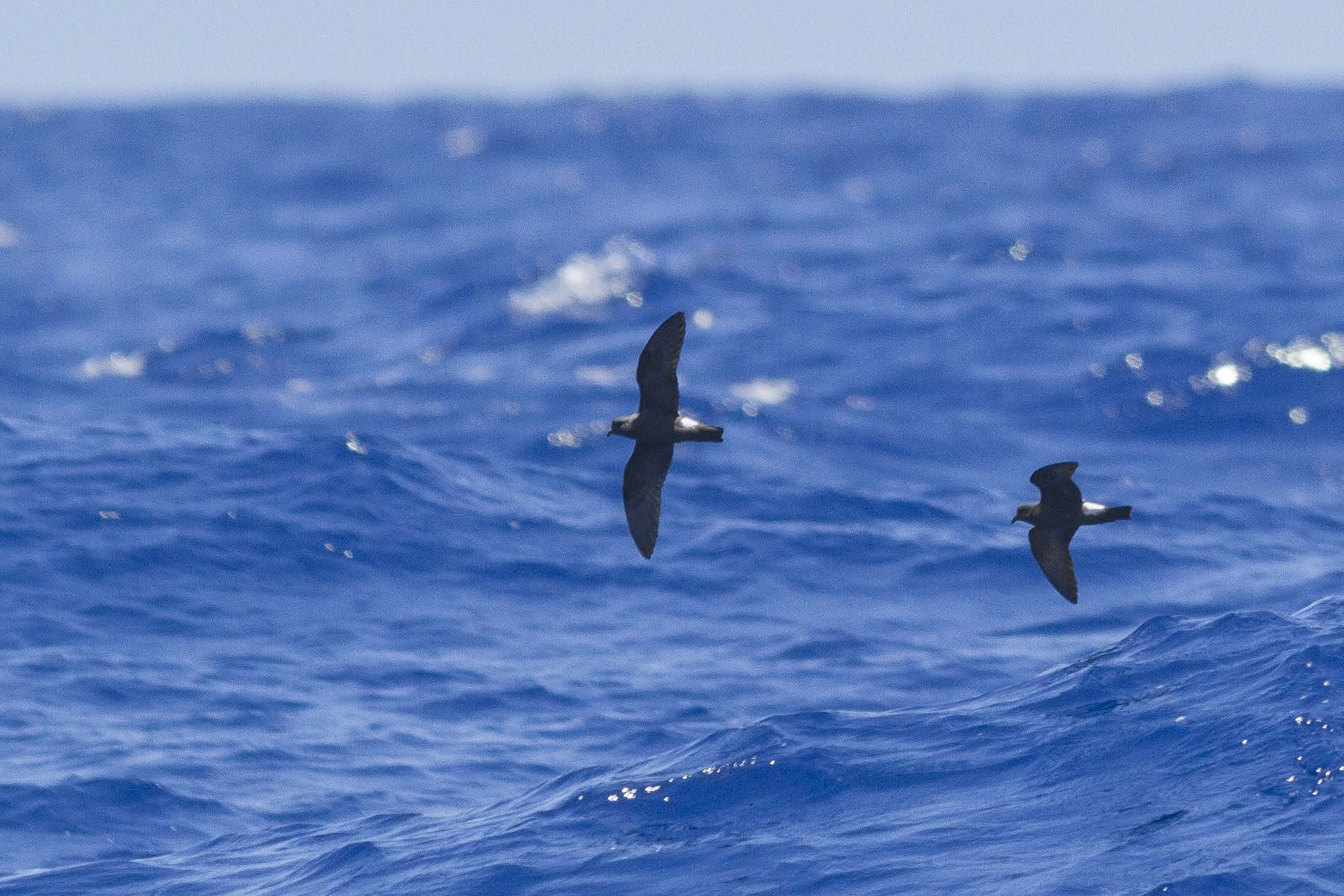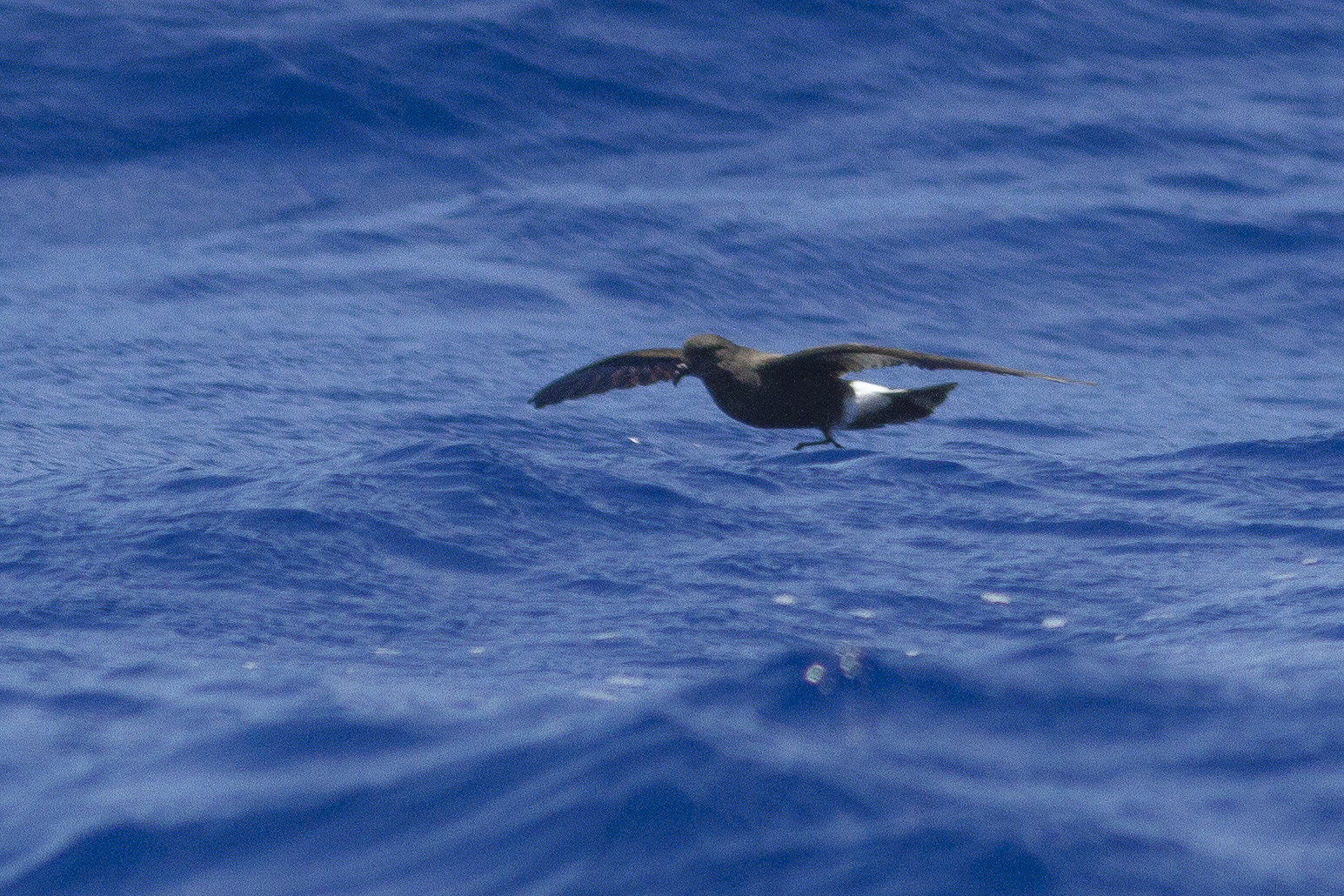‘Akē‘akē

Names
- ʻŌlelo Hawaiʻi: ‘Akē‘akē
- Common: Band-rumped storm-petrel
- Scientific: Oceanodroma castro
Song
Conservation Status
- Federal Candidate for Listing
- State Listed as Endangered
- State Recognized as Indigenous
- NatureServe Heritage Rank G4 – Apparently Secure
- Regional Seabird Conservation Plan – USFWS 2005
Species Information

‘Akē‘akē or Band-rumped storm-petrel. PC: Jacob Drucker
The ‘akē‘akē or band-rumped storm-petrel is a medium sized, highly pelagic storm-petrel (Family: Hydrobatidae), and is the smallest and rarest seabird that breeds in Hawai‘i. Adults are primarily blackish-brown and have a sharply defined narrow white band across rump area. Flight is characterized by shallow wing beats and long glides just over the surface of the ocean. Foraging alone or with others of its same species, ‘akē‘akē feed while sitting on the water or by dipping prey while flapping just above the ocean surface, often pattering water with feet. There is no diet information from Hawai‘i, but elsewhere diet primarily consists of small fish, squid, and some crustaceans. Breeding biology in Hawai‘i is poorly known, but these birds are known to nest in burrows or natural cavities in a variety of high-elevation, inland habitats. As with most seabirds, a single egg is laid per season. In Hawai‘i, eggs are laid between May and June, and young birds start learning how to fly in October. ‘Akē‘akē likely do not breed until they are three to seven years old, and likely live for 15 to 20 years.
Distribution
Historically, was abundant and widespread throughout Main Hawaiian Islands (MHI). Nesting colonies occur on Kaua‘i at elevations around 600 meters (1,950 feet), on Maui (in Haleakalā National Park) and the island of Hawai‘i (in Hawai‘i Volcanoes National Park) at elevations greater than 1,200 meters (3,900 feet), and on Lehua. Outside of Hawai‘i, the species nests in Japan and on the Galapagos, and on several islands in the Atlantic. At sea, they occur in the Pacific and Atlantic oceans.
Habitat
Breeds in a variety of remote, high elevation, inland habitats. On Kaua‘i, colonies are in steep valleys vegetated with shrubs and grasses. On Maui and the island of Hawai‘i, colonies occur on high, barren lava flows. Nesting in burrows or crevices in rock or lava has also been documented using artificial nest boxes.
Threats
Due to its very small population size in the Hawaiian Islands, the ‘akē‘akē is susceptible to stochastic, genetic, environmental, and demographic events that could lead to extirpation. Important threats to the species include
- Introduced predators. Adults and chicks are susceptible to predation by pigs (Sus scrofa), rats (Rattus spp.), feral cats (Felis silvestris), and the small Indian mongoose (Herpestes auropunctatus).
- Feral ungulates. Pigs, goats (Capra hircus), and sheep degrade nesting habitat.
- Artificial lighting. Street and resort lights, especially in coastal areas, likely disorient fledglings, causing them to eventually fall to the ground exhausted or increasing their chance of colliding with artificial structures (i.e., fallout). Once on the ground, fledglings are unable to fly and are killed by cars, cats, and dogs (Canis familiaris) or die of starvation or dehydration.
- Collisions. Adults and fledglings are susceptible to mortality from collisions with obstacles such as communication towers and utility lines while commuting between inland nest sites and the ocean at night.
- Colony locations. The remoteness of colonies, as well as the habitat in which they occur (e.g., steep terrain or dense forest), complicates predator and ungulate eradication or control.
Explore from Home
Plans & Projects
- Kauaʻi Endangered Seabird Recovery Project (KESRP)
- Maui Nui Seabird Recovery Project (MNSRP)
- Lehua Ecosystem Restoration Project
Additional Resources
For more information and references visit the DLNR State Wildlife Action Plan factsheets. DOFAWʻs species pages and State Wildlife Action Plan fact sheets are provided for general information and are not meant to be a citable, original source of data. If you are a student, researcher, or writer looking for a citable source, please explore the references below or find other original data sources, rather than citing these webpages. The references below were provided by the authors of the State Wildlife Action Plan fact sheets at the time of drafting:
- IUCN Red List of Threatened Species. Version 2014.3. www.iucnredlist.org. (Accessed May 2015).
- Kushlan JA, et al. 2002. Waterbird Conservation for the Americas: The North American waterbird conservation plan, Version 1 Waterbird Conservation for the Americas, Washington, DC. 78pp. Available at: www.waterbirdconservation.org.
- NatureServe. 2003. Downloadable animal data sets. NatureServe Central Databases. Available at: https://www.natureserve.org/getData/vertinvertdata.jsp (March 10, 2005).
- Slotterback JW. 2002. Band-rumped Storm-petrel (Oceandroma castro). In The Birds of North America, No. 673 (Poole A, Gill F, editors.). Philadelphia, (PA): The Academy of Natural Sciences; and Washington DC: The American Ornithologists’ Union.
- U.S. Fish and Wildlife Service. 2005. Regional seabird conservation plan, Pacific Region. U.S. Fish and Wildlife Service, Migratory Birds and Habitat Programs, Pacific Region. Portland, Oregon.
- U.S. Fish and Wildlife Service. 2014. Species Assessment and Listing Priority Assignment Form: Oceandroma castro, Band-rumped Storm-petrel. U.S. Fish and Wildlife Service, Region 1, Pacific Region.

